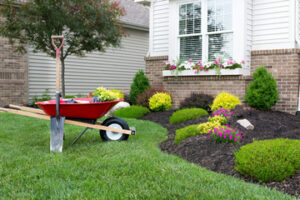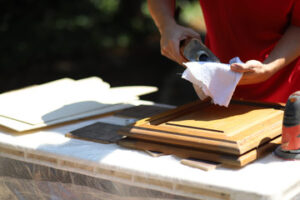Tree removal is often the result of a number of factors: from disease/infestation to development plans or landscaping redesign. Whatever the reason, it’s important to consult a professional who can gauge the health of the trees and recommend alternatives like pruning.

Limbing involves trimming or cutting a tree while it’s still standing, using specialized equipment. It’s important to wear safety gear during this process! Visit Website to learn more.
Tree stumps are an eyesore and a safety hazard for anyone walking or playing in your yard. They can cause tripping, and can block views into your property or into the street, especially when covered in grass or weeds. Stumps can also attract pests that can damage your lawn and garden.
Stump removal isn’t a task you can take on yourself, and is generally best left to professionals. However, there are a few things that homeowners can do to make the process more manageable and efficient. First, clear the area around the stump. It’s important to have enough space to safely fell the tree, so it doesn’t hit any power lines or other obstacles. It’s also helpful to mark out the exact footprint of the stump so the professional can easily dig it out.
Then, use a shovel to dig around the base of the stump, exposing as much of the root system as possible. This will help the professional to remove the roots quickly and completely.
Another option is to use a chemical stump killer. This is effective, but it takes a while to work, and can potentially harm nearby plants, lawns, or soil if over-applied. Additionally, it’s not safe for children and pets to be around.
Some homeowners choose to let the stump rot, which is an environmentally friendly solution. Fungi that don’t possess chlorophyll grow in the wood and break it down, which provides nutrients for other plants. However, this method can take years to complete, and it’s inconvenient for those who want their landscape cleared immediately.
Lastly, homeowners can hire a machine that grinds the stump and roots into small wood chips. This can be done very quickly, and leaves the site ready for landscaping. This is an ideal solution for those who don’t mind waiting for the stump to rot, but still want to remove it as soon as possible.
Homeowners can also opt for full stump removal, which is the most extensive and expensive option. This involves excavation and removing the entire stump and root system from the ground. It’s typically completed with a backfill of soil or other landscaping material. This method prevents future regrowth and also prevents any potential for underground decay.
Tree Trimming
Tree trimming is a critical component of the overall health, aesthetics and safety of your landscape. It is the practice of removing diseased, damaged, or crossing branches from a tree to promote healthy growth patterns, prevent damage from storms, and protect nearby structures such as homes, cars and power lines.
Over time, even a healthy-looking tree can become overgrown. This can lead to an increased risk of injury to people or property due to dangling branches or branches that are close to power lines, or trees that could fall over without warning. It can also be detrimental to the surrounding ecosystem. Unchecked, overgrown trees can become breeding grounds for pests and can spread diseases to neighboring plants. In addition, overgrown roots can cause visible cracks in sidewalks and driveways and can entangle with utility lines.
While a lot of people use the terms “tree removal” and “tree trimming” interchangeably, there are important differences between these services. Tree removal involves a more drastic measure and is typically conducted when there is an immediate danger of a tree falling over or causing damage to a structure or person. Tree trimming, on the other hand, is a less-invasive service that can be conducted to maintain the beauty of your landscape and protect the integrity of your yard.
When it comes to trimming, there are two primary types of cuts: thinning and crown reduction. Thinning removes a specific number of branches from a canopy to reduce density and open up the foliage, increasing air flow and light penetration throughout the crown. Thinning is typically conducted on younger trees and shrubs to encourage healthy growth and help them reach their full potential.
Crown reduction, on the other hand, is often conducted on more mature and older trees to reduce their height or spread for a variety of reasons. Often, this is done to increase the view from a home or provide clearance for buildings or vehicles.
While both of these methods can be effective, it’s best to hire an experienced and professional arborist for your tree trimming services. Not only will they ensure that your trees and shrubs are properly trimmed, but they will also conduct a variety of other services to keep them healthy.
Tree Pruning
Trees often require pruning as part of regular maintenance to promote and maintain health, structure and beauty. Pruning removes dead branches, reduces risk from storm damage or failure, maintains clearance for people and vehicles, helps to manage invasive pest populations and enhances appearance. Our tree professionals are skilled in making well-informed pruning cuts that promote a strong and durable structure, improve air movement throughout the crown and shape trees to fit in with your landscape design.
Some trees look best with a single dominant leader, where there is only one main upright limb that grows up and out of the crown. Larger trees that have more than one dominant limb can develop problems such as competing limbs, overcrowding and weakening of the connection between the main limb and the trunk. This can lead to the breakage of limbs and even the entire tree. Proper thinning opens up the foliage for better sunlight penetration and lessens the weight on larger limbs, which can reduce the chance of damage from wind or ice.
Raising removes lower branches from a tree to reduce the height of the canopy, which is commonly done to provide clearance for cars, pedestrians and buildings. This type of pruning is also used to correct structural deficiencies, increase light penetration in the landscape and maintain crop production and fruit quality in fruit trees.
Generally, we do not recommend “topping” or any other destructive pruning practices. Regardless of your reasons for pruning, we encourage you to contact us so we can explain the pros and cons of the different types of pruning cuts and determine the proper timing for each.
Other less-common ornamental pruning styles include pollarding (removing the tree’s annual shoot growth in order to limit the size of its branch structure) and topiary, espalier and bonsai (tree-like shrubs that are pruned to a predetermined form). These types of pruning can be damaging to the trees as they can remove vital growth areas and expose the woody interior to insects and diseases that could enter through open wounds. They should only be performed on species that are capable of surviving this type of pruning.
Tree Health Care
Tree health care involves the diagnosis and management of biotic and abiotic stressors that impact trees. These may include diseases, insects, fungi, soil conditions and other environmental factors. These are often overlooked and can lead to the deterioration of the quality of a tree. For example, soil that is too acidic or salty can result in decreased root growth and nutrient uptake, which is reflected by symptoms like unnatural leaf coloration.
Another abiotic issue is stem girdling where roots choke off the flow of water and nutrients to the main trunk of the tree, causing it to weaken, lean, or die prematurely. This is common among urban and residential trees where sidewalks and driveways are nearby. Stem girdling is also caused by underground utility pipes, trenching, digging, or grading near a tree.
When a tree is severely diseased, damaged, or dead, it must be removed. This is usually done as a last resort, and requires specialized equipment to execute safely. Often, the removal of a tree is necessary to protect people and property from falling debris. It is also required in certain circumstances where a tree’s roots are impacting the foundation of a house or intertwined with power lines.
Monarch Landscape’s holistic approach to tree health care harmonizes irrigation mastery, soil vitality restoration, pest vigilance, Deep Root Fertilization, Trunk Injection Technology, and Resistograph Testing Services. It’s a symphony of care orchestrated to nurture not only individual trees, but the thriving ecosystems they shape.
A healthy tree adds value to your property, beautifies the environment, reduces energy costs by shading the ground in summer and protecting it in winter, and improves air quality. It is important to perform routine inspections to detect any potential issues and treat them before they become dangerous.


